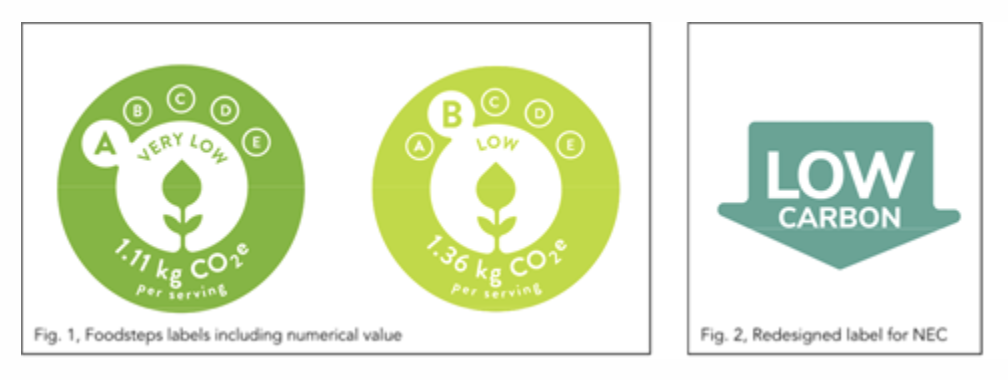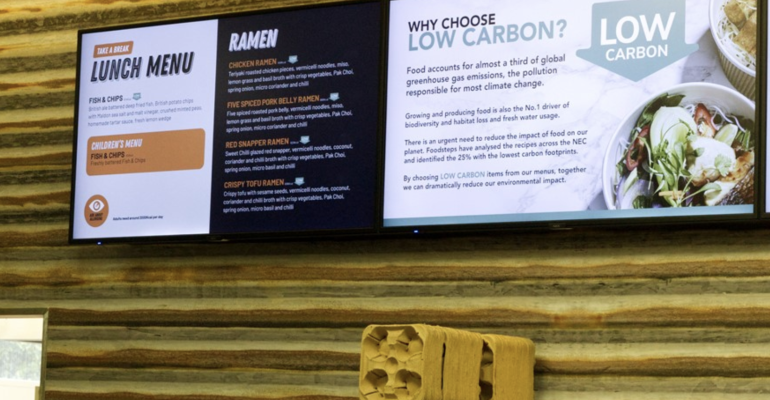With food and beverage being a critical component of attendee satisfaction at meetings, planners walk a fine line when trying to create event menus that minimize carbon output. However, getting attendees on board with low-carbon food choices might be better achieved by giving them information rather than making draconian menu changes.
That’s precisely what is happening at NEC Birmingham, the largest conference and exhibition facility in the United Kingdom. Amadeus, the venue’s in-house catering provider, has partnered with Foodsteps, an environmental-sciences firm, to present carbon-emissions data for 3,800 food items (but not beverages) that are served in meals and snacks during events held at NEC Birmingham.
When attendees approach any of the F&B outlets or serving stations in the facility, they are greeted by digital menus that show the food options along with a carbon-emission rating for the full life cycle of that item. Full life cycle takes into account the carbon emissions from farming, processing, packaging, transportation, cooking, and disposal of the item.
 Assessed recipes that receive an A or B rating from Foodsteps get a “low carbon” food label alongside a brief explanation about its meaning. Food items that receive a C, D, or E rating get no label on the menu and are considered non-compliant with the target of the 2015 U.N. Paris Agreement to keep global warming below 2.0 degrees Celsius by 2050.
Assessed recipes that receive an A or B rating from Foodsteps get a “low carbon” food label alongside a brief explanation about its meaning. Food items that receive a C, D, or E rating get no label on the menu and are considered non-compliant with the target of the 2015 U.N. Paris Agreement to keep global warming below 2.0 degrees Celsius by 2050.
Another Choice Attendees Can Make
NEC Birmingham’s carbon-education strategy is similar to one rolled out by Google Flights last fall. The company now provides users with carbon-emission information during the flight-booking process.
To produce the emissions estimates, Google combined data from the European Environmental Agency with the flight-specific information it gets from airlines on aircraft type, trip distance, and the number of seats in each seating class. The emissions estimates are flight-specific as well as seat-specific. Some tips: Newer aircraft are generally less polluting than older aircraft, and emissions increase for premium-economy and first-class seats because they take up more space and account for a larger share of total emissions.
Flights with significantly lower emissions are labeled on Google Flights with a green badge. Also, flight options can be sorted to bring the lowest-emission flights to the top of the list.





